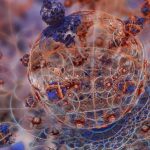IEEE Citation Style: References to Different Works in IEEE Format

From the life sciences to the physical sciences, researchers need to cite sources accurately. In fields like engineering, physics, computer science, etc., the style followed by IEEE, the largest technical professional association in the world, is popular. That’s why we’re today focusing on this style guide, especially IEEE citation style.
IEEE Citation Style
Like the AMA manual, the favorite style guide of the biomedical sciences, the IEEE style guide goes in for numbered in-text citations. You’ve to use Arabic numbers, non-superscripted and enclosed in square brackets. Like this
Piggywiggy [8] devised a novel machine learning approach for predicting temperature.
A previous study [6] examined the effectiveness of using Chebyshev polynomials to quantify uncertainty.
What you need to remember for IEEE citation style:
- Don’t use an en dash in a reference range. Write out all the citations, like this: “[1], [2], [3], [4]”
- If there are more than 3 author names and you’ve to use the author names in the main text, use “et al.” after the 1st author’s name: “Puppydoodle et al. [7] devised …”
- If there are 2 author names, use “and” between them in the main text: “… as shown by Shampooboy and Talksababy [10]”
Formatting the Reference List in IEEE Style
We’ll provide detailed examples further on, but let’s get some of the basics out of the way first:
- The reference list appears at the end of the text, and is numbered. Order references according to how they are mentioned in the main text, not alphabetically.
- The reference number appears flush left, and is enclosed in square brackets.
- All references end with a period, except those ending with URLs. Use a period after the DOI.
- Never combine references.
- Always use initials for the first name of authors or editors. Don’t use commas around “Jr.”, “Sr.” etc. in author names.
- List names of all authors up to the 6th author if you’re citing other IEEE publications. When there are 7 or more authors, list the first author’s name followed by “et al.” If you’re citing non-IEEE publications, try to follow the same style but it’s okay to use “et al.” if names aren’t provided for fewer than 6 authors too.
- IEEE considers software a “legitimate and citable product of research”, just like a journal article or book. You therefore need to provide citations and references for any software mentioned in your research paper.
Common Abbreviations Used in IEEE Reference Style
A quick look at the most popular abbreviations used in IEEE Style:
- Annals = Ann.
- Annual = Annu.
- Proceedings = Proc.
- Record = Rec.
- Symposium = Symp.
- Conference = Conf.
- Convention = Conv.
- National = Nat.
- International = Int.
Note that “Meeting” and “Workshop” are not abbreviated.
Examples of References in IEEE Style
Book Chapters
T. V. Pumpsy and G. V. Mumpsy, “Why we love to eat fish,” in The Joy of Telling Stories About Hip Hop Music, vol. 4, P. G. Champy and B. S. Hampy, Eds., Princeton, NJ, USA: Princeton Univ. Press, 1965, pp. 124–133.
Book
K. Matzuki, Y. Watanabe, and H. Takashima, Japan’s Railway System, Tokyo: Nihon Keizai Hyoronsha (in Japanese), 2017.
Conference Proceedings
C. Naughtyboy and S. Goodgirl, “Analysis of a pretty little antenna using a cute camel’s milk,” in Proc. IEEE Antennas Propag. Soc. Int. Symp., Jul. 2017, pp. 4322–4334.
G. Singalong, “How to catch and kill a ballerina lioness,” in Proc. Humanoids ’06: 6th IEEE-RAS Int. Conf. Ballerina Animals, 2006, pp. 444–448, doi: 10.1109/ICHR.2006.321337.
Datasets
Department of Happy Nutcases, Aug. 2013, “Funny Dogs Dataset: All Jumping Cats, 2006 to 2009,” Department of Happy Nutcases, Substance Abuse and Mental Health Services Administration, Office of Skydiving Sealions. [Online]. Available: http://www.icsr.ujuch.edu/icpsrweb/SAMHDA/studies/30122/version/
Patents
T. Fatso and J. Catso, “Method for circumcision of waltzing oxen and somersaulting guinea pigs,” U.S. Patent 7 818 177 B1, 2011, Mar. 1, 2012.
Journal Articles
M. Longboots and K. Taxipants, “Induction of electric field in fat eagles nesting in coconut trees: A machine learning approach to cooking sheepskin pasta,” IEEE Trans. Biomed. Eng., vol. 28, pp. 287–299, Oct. 2015, doi: 10.1109/TBME.2001.2658415.





